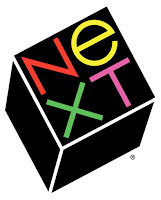Helvetica
Designer – Max
Miedinger, assisted by Eduard Hoffmann
Category – Sans-serif
Classification –
Neo-grotesque sans-serif
Foundry – Hass Type
Foundy
Date released – 1957
 |
| Helvetica |
During this period,
Hoffmann was the president of the Haas Type Foundry, while Miedinger was a
graphic design freelancer, where the two had formerly worked together as Haas
salesman and designers.
The sans-serif typeface
is a neo-grotesque design that was based on the 19th century
Akzidenz-Grotesk typeface originally released by the Berthold Type Foundry in
1896 which became one of the first sans-serif typefaces to be widely used.
Developed by the Haas’sche Schrigtgiesserei (Hass Type Foundy) in
Munchesnstien, Switzerland, it was mean to match the trend of and rebirth the
interest in the turn-of-the-century grotesque typefaces with European graphic
designers, which resulted in the release of Universe, created by Adrian
Frutiger within the same year.
The influences of
Helvetica includes Schelter-Grotesk and Haas’ Normal Grotesk which lead to the
name of Neue Hass Grotesk which gained considerable attention on its release,
this was adopted for widespread release. The name was changed to Helvetica
(meaning Swiss in Latin) by the German parent company Stempel in 1960 as a mean
of a more marketable name internationally. With intention of matching the
success of Univers, Stempel redesigned the typeface into a larger family.
Helvetica has become
one of the most used sans-serif typefaces, it is a common choice in commercial
wordmarks for brands such as 3M, BMW, ECM, Mcdonalds, Motorola, Nestle,
Panasonic, Skype, Target and Verizon. Apple also used Helvetica as the syste,m
typeface of iOS used for their products.
In 2007 a
feature-length film directed by Gary Hustwit was released that coincided with
the 50th anniversary of the typeface.
 | |
| Typeface Poster 1 |
Overall from my experience researching and using Helvetica for my studio project I now have a better understanding as to why Helvetica has become one of the most popular typefaces in history. The clarity and simplicity, the vertical and horizontal form of the strokes, the monotone weight of the lines, all culminate into a typeface that is both classic and modern that highly works in when viewed by the public eye, that is why I find that it fits perfectly with its current uses in advertising, signage and documents. It is clear and easy to read while also keeping a structured form that shows in design. Before applying this typeface to my posters I never thought anything of the font but with having a clearer understanding of its history and current uses in the public today I have more appreciation for Helvetica and what it has accomplished.
 |
| 27th Alphabet Poster 1 |
When using the font in my posters the first thing that came to mind was the clean and structured form which I ended up focusing on with my first font poster but that resulted in a product that felt information heavy and cluttered, this resulted in a more minimalistic second attempt where I took away most of the information and played around with the font to add more of a playful vibe which I also took into account when choosing the image of the woman as I felt that it was playful but also elegant. The use of colours were chosen to feature an older style look and to add some depth to the design. As for the symbol poster If focused on a minimal design which featured negative space while having the 27th alphabet as the main point of view of the poster while also including a smaller section of information.




















